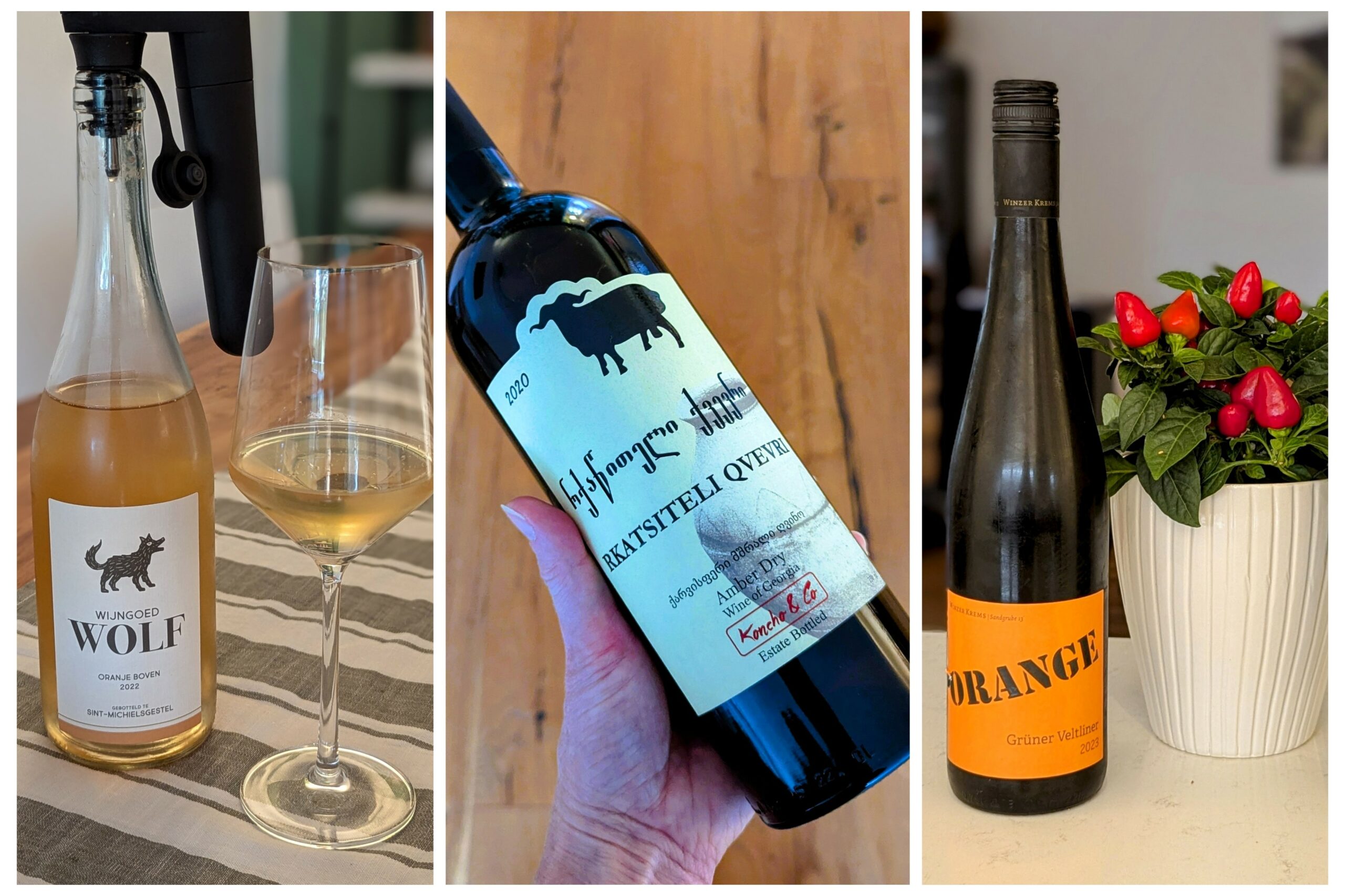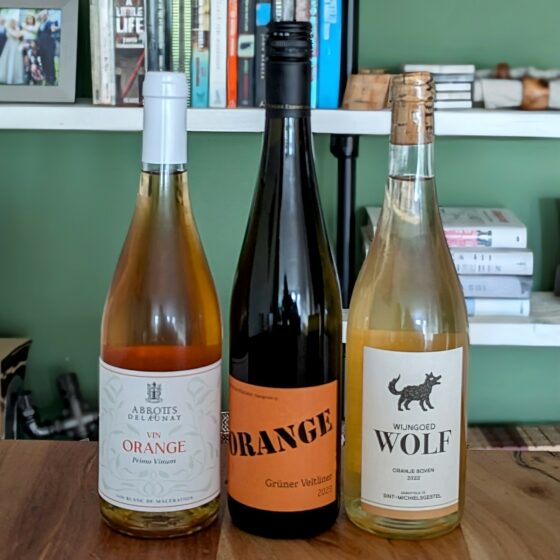Wine Watch: Toasting to oranjegekte with orange wine
Vicky Hampton
Each month, our resident wine expert, Vicky Hampton, selects her pick of wines that befit the season for those on a budget and those with a little more cash to splash. All featured wines are available here in the Netherlands from supermarkets, off-licence chains, local wine shops and online stores.
This King’s Day (April 26), how about ditching the Heineken and switching to a tipple that’s altogether more patriotic? Orange wine! While orange as a clothing colour looks good on almost nobody, orange as a wine category is steadily gaining popularity in the Netherlands alongside white, red and rosé. Before we get into this month’s recommendations, however, let’s do a quick bit of myth-busting about some common orange wine misconceptions.
What orange wines are (and what they’re not)
Simply put: orange wines are white wines made using the same method as red wines. What does that mean? Orange wines are made using white grapes, but the skins of those grapes are left in contact with the juice for several days or weeks at the start of the wine-making process. It’s the grape skins that lend orange wines both their colour (that pinkish-amber tinge) and their texture (generally some tannins and a fuller mouthfeel than you’d notice in white wines that have had no skin contact).
What orange wines are not (or, at least, not by definition) are the same as natural wines. You’ll find natural wines in every different colour category, and you’ll find orange wines that are made in a conventional style (using filtration or sulphites or any other intervention commonly used in winemaking). That said, natural winemakers seem to be particularly keen on experimenting with skin contact at the moment, so orange wines are more likely to be “natural” than the average white wine is likely to be.
What orange wines are also not is anything new. The Georgians have been producing amber wines for literally thousands of years, while Slovenia and Northern Italy also have a long history of fermenting white wines with their grape skins. But like most things, wine has fashions, and fashions make comebacks – and right now, orange wine is having its cargo pants moment.
Food-friendly, funk-free and fun
Now that we’ve got past the notion that orange wines are a new-fangled fad designed solely for hipsters who favour funky, cloudy wines that taste like kombucha, we can start to have some fun with them. Not least because orange wines are notoriously food-friendly. They’re likely to go as well with a Sunday roast chicken as a spicy Dutch vlammetje or an Indonesian rijsttafel. But as usual, I’ll cover more specific pairing tips when we get into this month’s recommendations.

A quick note on price
As a category, orange wines tend to occupy a higher price point than regular whites. That’s because they’re still relatively niche (there are not yet many mass-market orange wines) and because of the prevalence of low-intervention production methods (which, by definition, cost more to achieve successfully).
Which is why this month, there’s no truly “budget” wine pick: the cheapest is over €10. That said, all three are under €20, which still represents good value in terms of the famous Dutch prijs-kwaliteitverhouding. And anyway, it’s King’s Day – what better excuse to celebrate with a special bottle of something orange!
Winzer Krems, Orange Grüner Veltliner, Austria, 2023 (€11.29)
Dutch supermarkets don’t tend to stock orange wines, and nor will you find many at the big Dutch chains – but this Austrian Grüner Veltliner from Gall & Gall is a great starting point for the orange-curious.
More deep golden than amber in colour, and with fairly light tannins, it’s a good gateway into orange wines. Think zesty mandarin, orange blossom, apricot, white peach and greengages. I served this wine with ludicrously spicy chicken wings: its fruitiness was a great match for the chilli, while its texture complemented the chicken.
Wijngoed Wolf, Oranje Boven, the Netherlands, 2022 (€17.95)
If you’re drinking orange wine for King’s Day, why not go one step further and make it a Dutch orange? Hailing from Noord-Brabant, Wijngoed Wolf has made this peachy-pale, slightly cloudy, biodynamic wine from sturdy, hybrid grapes Souvignier Gris and Sauvignac, which do well in the Dutch climate.
Refreshing and easy drinking rather than overpoweringly acidic or tannic, this orange wine would make a great accompaniment to a cheese board. Available from Bob Wijn, which is the Dutch wine shop-in-shop at Vindict (with two locations in Amsterdam – Noord and the Jordaan).
Koncho Rkatsiteli Qveri, Amber Dry, Georgia, 2020 (€17.95)
Last but by no means least, I couldn’t write an article about orange wines without including one from Georgia. This “Amber Dry” is made from white Rkatsiteli grapes, produced in the traditional Georgian clay amphorae (qvevri) in contact with both grape skins and seeds to lend it that amber colour and full-bodied texture.
The aromas and flavours skew exotic: preserved fruits like marmalade and apricot jam, baking spices like cloves and cinnamon, and some light oxidative notes like caramel and nuts. Available from Bilderdijk Wijnhuys in Amsterdam West, this wine would pair well with Middle Eastern mezze or spiced Moroccan tagine.
If you’re interested to learn more about orange wines, Vicky has written a two-part series on the subject on her Substack, The Wine Edit. For more of her wine recommendations and grape explorations, follow @TrufflesandTannins on Instagram.
Thank you for donating to DutchNews.nl.
We could not provide the Dutch News service, and keep it free of charge, without the generous support of our readers. Your donations allow us to report on issues you tell us matter, and provide you with a summary of the most important Dutch news each day.
Make a donation